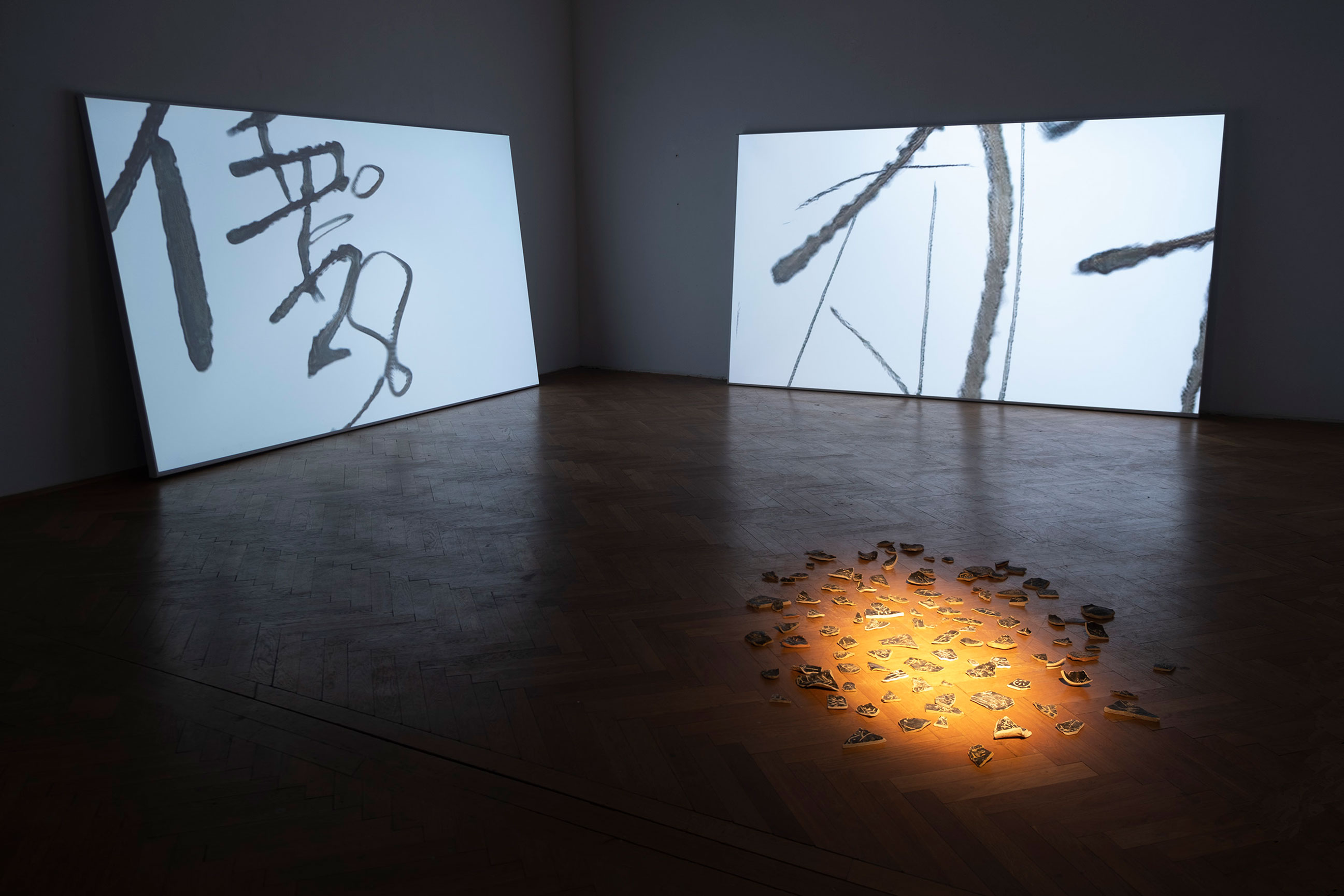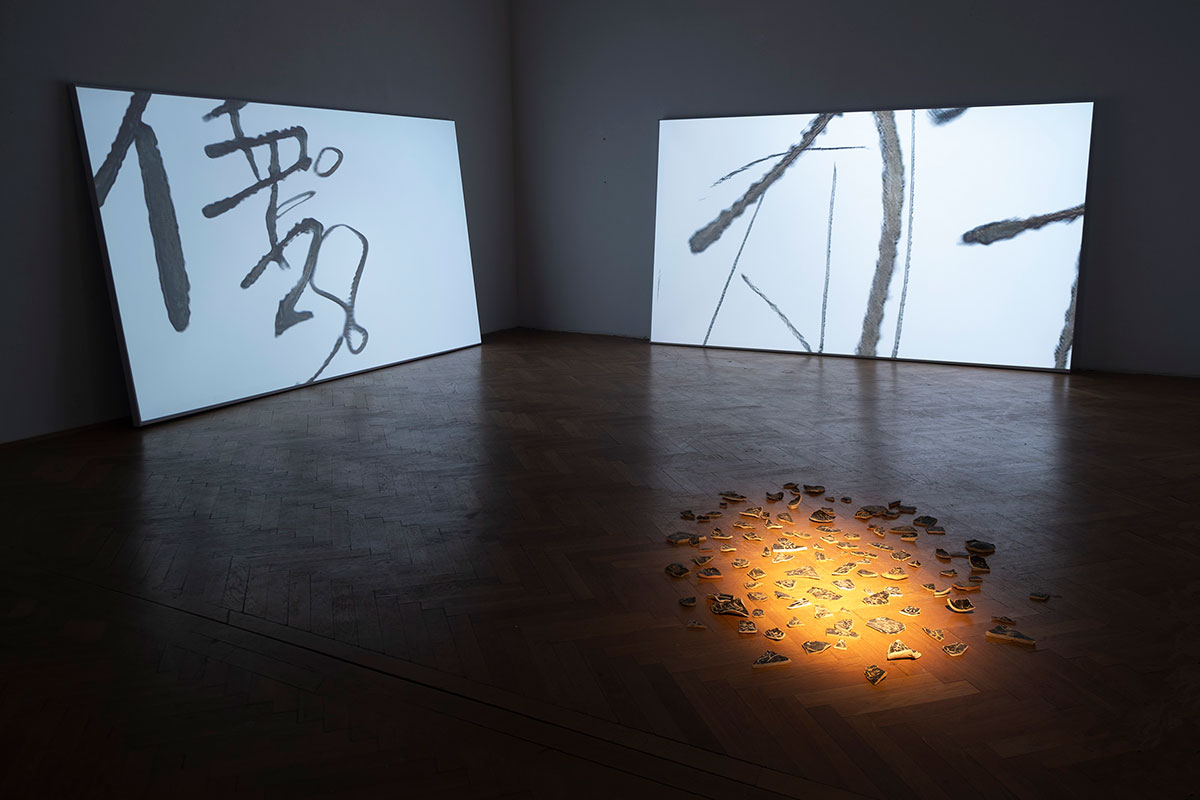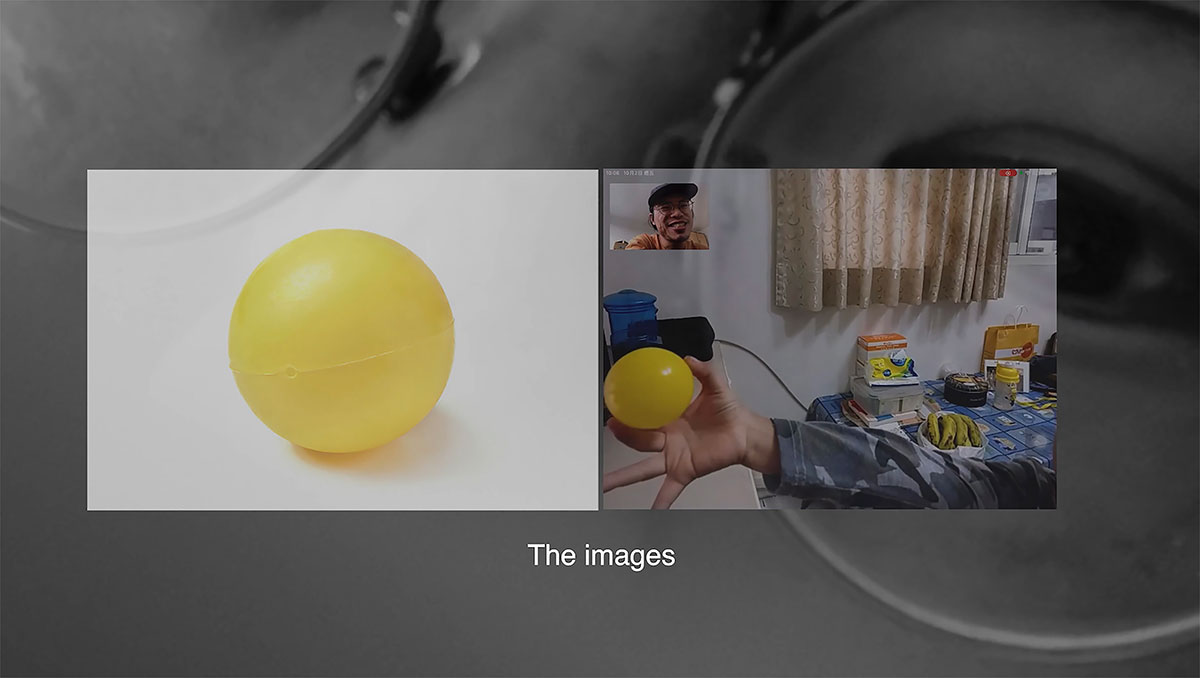CHANG Jia-Che

Ephemeral Radical
- 2022, clay tablets, two- channel video, 13 min 48 sec.
- Courtesy of the artist.
Curatorial Perspective
Chang Chia-Che has a professional training in traditional calligraphy and seal carving. In recent years, he has focused on reinventing creatively hieroglyphs and phonograms of Chinese characters, using artificial intelligence (AI) and other digital technologies. His practice frees calligraphy and seal carving from a confining attachment to text and conventional aesthetics, and thus unveils an alternative route to the arts revolving around Chinese characters. Ephemeral Radical incorporates the aim of “Brain to Text” scientific research, which is to construct direct communication channels between the human brain and computers. When a miniature electrode array is implanted in the cerebral cortex of a person suffering from paralysis, it is not necessary for decoded neural signals to pass through a mechanical arm or device. With optimized algorithms, handwriting trajectories conceptualized in the brain appear as corresponding letters on a screen. Chang utilizes a Generative Adversarial Network (GAN), an AI machine learning system of bionic neural networks. When the audience enter self-invented characters composed of the radical “亻” (meaning “human” or “human related”), the GAN will learn these characters to create new ones. These new characters with the radical will then be edited and incorporated into the video. In this work, the artist chooses “not to intervene” in the work of the AI, which allows independence for both the artist himself and the AI, and produces a relationship similar to that of a poet and nature. If the AI could be considered sentient, a network connecting multiple lifeforms would be generated among the video, the ceramic pieces, and the “pseudo characters” invented with the radical. This network is also an affective one woven by the artist, with remnants from the Neolithic Era, the digital era, the audience’s participation, as well as the technics of Chinese scripts, the last of which have evolved over several thousands of years. Like a contemporary version of Canjie’s mythological invention of characters, one might ask: When an inventor of characters searches for potential combinations of images in the cosmos, what inevitability and contingency are the results eventually hinged on?
Creation Description
Ephemeral Radical is based on handwriting samples provided by the public that have been copied, with emphasis on lines and structures, onto clay tablets, to form a training dataset for machine learning and to calculate a new “human” radical set. Through fictional dialogue between the brain and an external device, Ephemeral Radical incorporates the aim of “Brain to Text” scientific research, which is to construct direct communication channels between the human brain and computers. When a miniature electrode array is implanted in the cerebral cortex of a person suffering from paralysis, it is not necessary for decoded neural signals to pass through a mechanical arm or device. With optimized algorithms, handwriting trajectories conceptualized in the brain appear as corresponding letters on a screen. Objects become displayed images that are modulated via machine learning, forming an endless labor production network. Do these brief flashes of writing and the development of virtual interfaces mean that the human hand has been withdrawn from the very long writing culture?


